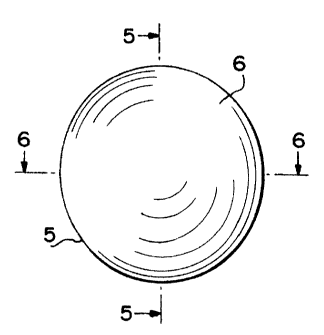Some of the information on this Web page has been provided by external sources. The Government of Canada is not responsible for the accuracy, reliability or currency of the information supplied by external sources. Users wishing to rely upon this information should consult directly with the source of the information. Content provided by external sources is not subject to official languages, privacy and accessibility requirements.
Any discrepancies in the text and image of the Claims and Abstract are due to differing posting times. Text of the Claims and Abstract are posted:
| (12) Patent: | (11) CA 2170196 |
|---|---|
| (54) English Title: | OVAL DOMED SHAPED PATELLA PROSTHESIS |
| (54) French Title: | PROTHESE DE ROTULE EN FORME DE DOME OVAL |
| Status: | Deemed expired |
| (51) International Patent Classification (IPC): |
|
|---|---|
| (72) Inventors : |
|
| (73) Owners : |
|
| (71) Applicants : |
|
| (74) Agent: | NORTON ROSE FULBRIGHT CANADA LLP/S.E.N.C.R.L., S.R.L. |
| (74) Associate agent: | |
| (45) Issued: | 2007-05-22 |
| (22) Filed Date: | 1996-02-23 |
| (41) Open to Public Inspection: | 1996-08-28 |
| Examination requested: | 2003-02-20 |
| Availability of licence: | N/A |
| (25) Language of filing: | English |
| Patent Cooperation Treaty (PCT): | No |
|---|
| (30) Application Priority Data: | ||||||
|---|---|---|---|---|---|---|
|
An improved knee prosthesis disclosed that includes a patella for positioning in a trochlear groove formed by two condyles of a femoral component. The novel patella of the disclosure has an elliptical outer periphery and presents an articulating surface to the femoral component for sliding engagement with a trochlear groove formed between the condyles of the femoral component. A side opposite the articulating surface has extending therefrom three posts which enhance the attachment of the patella prosthesis to the patella bone. In one embodiment of the invention an undercut area which is cut into the bone contacting surface of the prosthesis presents an overhang or undercut to the bone in order to enhance cement fixation. The overhang is formed by an outer defining wall which is positioned at an angle to a bottom surface of the recessed overhang area of between 50 and 75°.
Une invention d'une meilleure prothèse du genou qui comprend une rotule pour un positionnement dans une trochlée formée par deux condyles de la pièce fémorale. La rotule nouvelle de l'invention présente une périphérie externe elliptique et présente une surface d'articulation de la pièce fémorale pour un engagement coulissant avec une trochlée formée entre les condyles de la pièce fémorale. Le côté opposé à la surface d'articulation a trois postes s'étendant de celle-ci qui améliorent la fixation de la prothèse de rotule à l'os rotulien. Dans un mode de réalisation de l'invention une zone de dégagement qui est découpée en contact avec l'os de la surface de la prothèse présente un surplomb ou une coupure inférieure à l'os afin d'améliorer la fixation du ciment. La saillie est formée par une paroi extérieure définissante qui est positionnée à un angle par rapport à une surface inférieure de la zone en saillie en creux comprise entre 50 et 75 °.
Note: Claims are shown in the official language in which they were submitted.
Note: Descriptions are shown in the official language in which they were submitted.

For a clearer understanding of the status of the application/patent presented on this page, the site Disclaimer , as well as the definitions for Patent , Administrative Status , Maintenance Fee and Payment History should be consulted.
| Title | Date |
|---|---|
| Forecasted Issue Date | 2007-05-22 |
| (22) Filed | 1996-02-23 |
| (41) Open to Public Inspection | 1996-08-28 |
| Examination Requested | 2003-02-20 |
| (45) Issued | 2007-05-22 |
| Deemed Expired | 2014-02-25 |
There is no abandonment history.
Note: Records showing the ownership history in alphabetical order.
| Current Owners on Record |
|---|
| DEPUY ORTHOPAEDICS, INC. |
| Past Owners on Record |
|---|
| JOHNSON & JOHNSON PROFESSIONAL, INC. |
| SCOTT, RICHARD D. |
| SLAMIN, JOHN |
| THORNHILL, THOMAS S. |